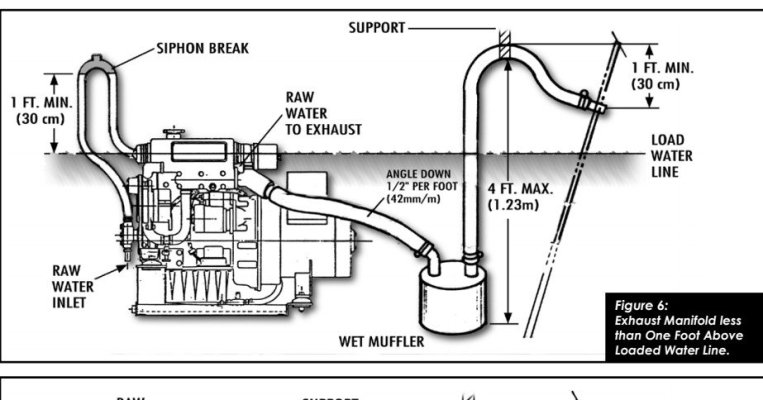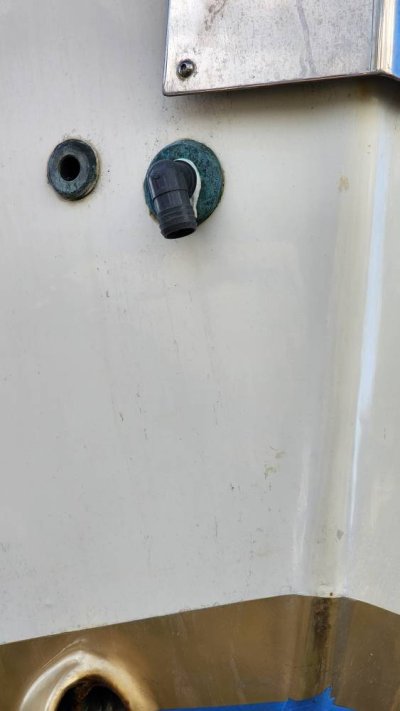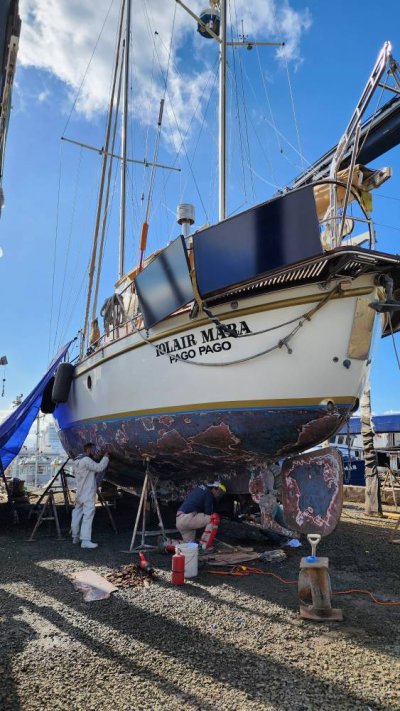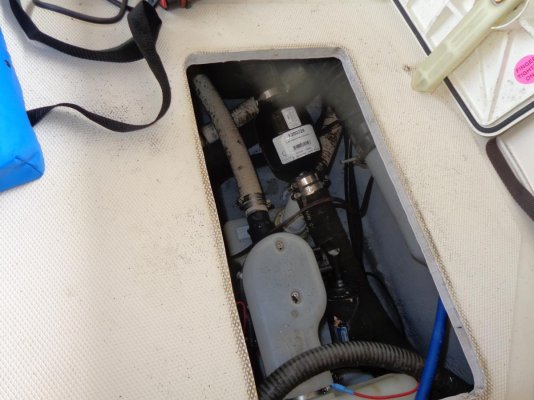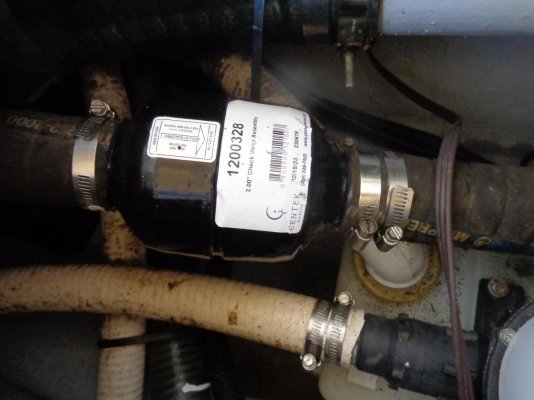rgano
Guru
- Joined
- Oct 8, 2007
- Messages
- 4,996
- Location
- USA
- Vessel Name
- FROLIC
- Vessel Make
- Mainship 30 Pilot II since 2015. GB-42 1986-2015. Former Unlimited Tonnage Master
I have now suffered two water instrusion events through the exhaust system on my low-mounted NextGen 3.5 KW generator. It is at the repair shop now, but when I goes back in, I want to install a check valve in the 2-inch exhaust hose downstream of the lift muffler. Does anybody know if there is an orientation preference, i.e. vertical or horizontal? Mounting vertically is probably impossible anyway, but I thought I would check to see if a horizontal mount is predjudicial to good order and discipline in the exhaust stream.

